#satellite ground stations
Photo

Chinese Satellite Ground Stations in Latin America
Brazilian President Luiz Inacio Lula da Silva will soon be in China to negotiate the construction of a new satellite. As the US-China rivalry heats up, Washington is sensitive to any Latin American space collaborations involving Beijing.
by @GPFutures
67 notes
·
View notes
Text
North American Satellite Ground Station Equipment Size: Dynamics, Regional Growth, and Forecast (2024-2032)

The North American Satellite Ground Station Equipment Size is poised for significant growth, driven by advancements in satellite technology and increasing demand for reliable communication infrastructure. Satellite ground stations are critical for maintaining communication links between satellites and terrestrial networks, supporting a variety of applications from data transmission to earth observation. As the demand for satellite services escalates across sectors such as telecommunications, defense, and space exploration, the Size for ground station equipment in North America is expanding. This blog explores the dynamics, regional growth, and forecast of the North American Satellite Ground Station Equipment Size from 2024 to 2032, providing a comprehensive overview of key trends and factors shaping the Size.
Size Dynamics
North America Satellite Ground Station Equipment Size Drivers:
Technological Advancements: Innovations in satellite and ground station technology, including enhanced data processing and communication capabilities, are driving Size growth. Developments in automation and digital signal processing improve operational efficiency and performance.
Increasing Demand for Satellite Services: The growing reliance on satellite communications for data transmission, weather forecasting, and military applications is boosting demand for ground station equipment. As satellite constellations expand, so does the need for advanced ground station infrastructure.
Government Investments: Significant investments from governments in satellite and space exploration programs are fueling the development of ground station equipment. Funding for research and infrastructure projects supports Size growth.
Regional Growth:
United States: The U.S. dominates the North American Size due to its substantial investments in satellite technology and space exploration. Major space agencies and private companies contribute to the high demand for ground station equipment.
Canada: Canada is also experiencing growth in the satellite ground station sector, driven by investments in space research and communication infrastructure. Government and commercial initiatives are expanding the Size.
Mexico: Although smaller, Mexico’s Size is growing as the country increases its investment in satellite communications and ground station infrastructure to support regional connectivity and data services.
Forecast (2024-2032):
Size Expansion: The North American Satellite Ground Station Equipment Size is expected to grow significantly, supported by technological advancements, increasing satellite services demand, and government investments.
Emerging Trends: Future trends include the deployment of advanced ground station technologies, integration of AI for automated operations, and expansion of satellite constellations enhancing global coverage and connectivity.
Conclusion
The North American Satellite Ground Station Equipment Size is set for robust growth, driven by technological innovation, rising demand for satellite services, and substantial government investments. Stakeholders should focus on leveraging advancements in ground station technology and aligning with emerging trends to capitalize on opportunities in this expanding Size.
About US
At Size Research Future (MRFR), we enable our customers to unravel the complexity of various industries through our Cooked Research Report (CRR), Half-Cooked Research Reports (HCRR), Raw Research Reports (3R), Continuous-Feed Research (CFR), and Size Research & Consulting Services. MRFR team have supreme objective to provide the optimum quality Size research and intelligence services to our clients. Our Size research studies by products, services, technologies, applications, end users, and Size players for global, regional, and country level Size segments, enable our clients to see more, know more, and do more, which help to answer all their most important questions. To stay updated with technology and work process of the industry, MRFR often plans & conducts meet with the industry experts and industrial visits for its research analyst members.
Contact us:
Size Research Future (part of Wants tats Research and Media Private Limited),
99 Hudson Street,5Th Floor, New York, New York 10013, United States of America
Sales: +1 628 258 0071 (US) +44 2035 002 764 (UK)
Email: [email protected]
0 notes
Text
Satellite Ground Station System Market – Revolutionary Trends 2032
Market Overview
The Satellite Ground Station System Market has witnessed significant growth in recent years, driven by the increasing demand for satellite communication and data transmission services. These systems serve as a crucial link between satellites in orbit and ground-based operations, facilitating a range of applications, including telecommunications, broadcasting, meteorology, and…
0 notes
Text
"A century of gradual reforestation across the American East and Southeast has kept the region cooler than it otherwise would have become, a new study shows.
The pioneering study of progress shows how the last 25 years of accelerated reforestation around the world might significantly pay off in the second half of the 21st century.
Using a variety of calculative methods and estimations based on satellite and temperature data from weather stations, the authors determined that forests in the eastern United States cool the land surface by 1.8 – 3.6°F annually compared to nearby grasslands and croplands, with the strongest effect seen in summer, when cooling amounts to 3.6 – 9°F.
The younger the forest, the more this cooling effect was detected, with forest trees between 20 and 40 years old offering the coolest temperatures underneath.
“The reforestation has been remarkable and we have shown this has translated into the surrounding air temperature,” Mallory Barnes, an environmental scientist at Indiana University who led the research, told The Guardian.
“Moving forward, we need to think about tree planting not just as a way to absorb carbon dioxide but also the cooling effects in adapting for climate change, to help cities be resilient against these very hot temperatures.”
The cooling of the land surface affected the air near ground level as well, with a stepwise reduction in heat linked to reductions in near-surface air temps.
“Analyses of historical land cover and air temperature trends showed that the cooling benefits of reforestation extend across the landscape,” the authors write. “Locations surrounded by reforestation were up to 1.8°F cooler than neighboring locations that did not undergo land cover change, and areas dominated by regrowing forests were associated with cooling temperature trends in much of the Eastern United States.”
By the 1930s, forest cover loss in the eastern states like the Carolinas and Mississippi had stopped, as the descendants of European settlers moved in greater and greater numbers into cities and marginal agricultural land was abandoned.
The Civilian Conservation Corps undertook large replanting efforts of forests that had been cleared, and this is believed to be what is causing the lower average temperatures observed in the study data.
However, the authors note that other causes, like more sophisticated crop irrigation and increases in airborne pollutants that block incoming sunlight, may have also contributed to the lowering of temperatures over time. They also note that tree planting might not always produce this effect, such as in the boreal zone where increases in trees are linked with increases in humidity that way raise average temperatures."
-via Good News Network, February 20, 2024
#trees#forests#reforestation#tree planting#global warming#climate change#climate crisis#american south#the south#eastern us#southern usa#conservation#meteorology#global temperature#conservation news#climate news#environment#hope#good news#hope posting#climate action#climate science#climate catastrophe#climate hope
14K notes
·
View notes
Text
Get to meet some senators tomorrow
0 notes
Text
We keep finding space stations, and we don't know why yet.
Most are in orbit around planets, but plenty more are orbiting moons, stars, the odd black hole, or just floating in deep space.
Their age varies, some are so old that just getting close enough to dock makes them shatter like glass, others are so recently constructed that the lights are still on and the reactors are still fueled. All are empty of any life or robots smarter than a roomba.
The ones orbiting planets are orbiting dead worlds, or living worlds where nothing on them is smart enough to launch a space station.
The stations in deep space are weirder. The most information came from the one by Epsilon Eridani. A massive installation, it had docking rings for hundreds of vessels, all empty. It was in remarkable shape for how old it was (from the unrepaired micrometeorite impacts, we estimate it has been abandoned for about 3000 years), so we were able to access a lot of information from its main computer. We found the coordinates of several home planets, and visited them all. All were dead, empty, or in one case, simply missing. The star was still there, the other uninhabitable planets mentioned in the databanks were there, but their homeworld? Gone. No debris or expanding gas cloud, it's just missing.
And that's the thing: if we found space stations along with abandoned ruins of ground-based installations, that'd make sense. If we met dozens of living races, amongst a few empty satellites of long dead races, that'd also be expected. But this is all the evidence we're not alone in the universe we've found.
We've sent probes to over half the stars in this galaxy and visited hundreds in crewed spacecraft, but the empty space stations are the only evidence of alien life. Every planet is either a sterile husk, a gas giant, or a vibrant living world with nothing smarter than a giraffe living on it. Oh, there's strange life forms of every kind! But none of them seem sapient, certainly not sapient enough to build a space station.
Where is everyone? We've been asking that question since we first understood the Drake Equation and the Fermi paradox, but the question has taken on a new form as we've gone to the stars and found endless empty houses in the sky.
It's the difference between looking at an empty desert and walking through an abandoned city. In both cases, there's a silent emptiness, but in the latter case, it seems to contain a sinister element. This place is empty, but it shouldn't be. Something made it empty, and we haven't found out why yet.
We keep looking, and keep listening to the echoes of our own footsteps in the silent habitats.
6K notes
·
View notes
Text

Navigating Deep Space by Starlight
On August 6, 1967, astrophysicist Jocelyn Bell Burnell noticed a blip in her radio telescope data. And then another. Eventually, Bell Burnell figured out that these blips, or pulses, were not from people or machines.

The blips were constant. There was something in space that was pulsing in a regular pattern, and Bell Burnell figured out that it was a pulsar: a rapidly spinning neutron star emitting beams of light. Neutron stars are superdense objects created when a massive star dies. Not only are they dense, but neutron stars can also spin really fast! Every star we observe spins, and due to a property called angular momentum, as a collapsing star gets smaller and denser, it spins faster. It’s like how ice skaters spin faster as they bring their arms closer to their bodies and make the space that they take up smaller.

The pulses of light coming from these whirling stars are like the beacons spinning at the tops of lighthouses that help sailors safely approach the shore. As the pulsar spins, beams of radio waves (and other types of light) are swept out into the universe with each turn. The light appears and disappears from our view each time the star rotates.

After decades of studying pulsars, astronomers wondered—could they serve as cosmic beacons to help future space explorers navigate the universe? To see if it could work, scientists needed to do some testing!
First, it was important to gather more data. NASA’s NICER, or Neutron star Interior Composition Explorer, is a telescope that was installed aboard the International Space Station in 2017. Its goal is to find out things about neutron stars like their sizes and densities, using an array of 56 special X-ray concentrators and sensitive detectors to capture and measure pulsars’ light.

But how can we use these X-ray pulses as navigational tools? Enter SEXTANT, or Station Explorer for X-ray Timing and Navigation Technology. If NICER was your phone, SEXTANT would be like an app on it.
During the first few years of NICER’s observations, SEXTANT created an on-board navigation system using NICER’s pulsar data. It worked by measuring the consistent timing between each pulsar’s pulses to map a set of cosmic beacons.
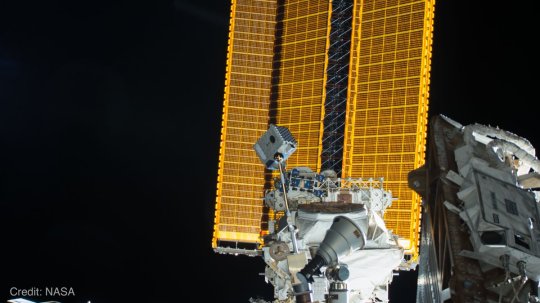
When calculating position or location, extremely accurate timekeeping is essential. We usually rely on atomic clocks, which use the predictable fluctuations of atoms to tick away the seconds. These atomic clocks can be located on the ground or in space, like the ones on GPS satellites. However, our GPS system only works on or close to Earth, and onboard atomic clocks can be expensive and heavy. Using pulsar observations instead could give us free and reliable “clocks” for navigation. During its experiment, SEXTANT was able to successfully determine the space station’s orbital position!
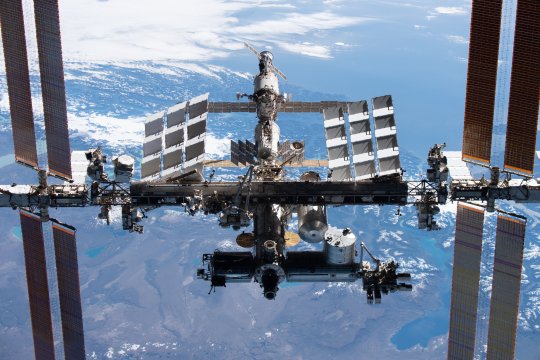
We can calculate distances using the time taken for a signal to travel between two objects to determine a spacecraft’s approximate location relative to those objects. However, we would need to observe more pulsars to pinpoint a more exact location of a spacecraft. As SEXTANT gathered signals from multiple pulsars, it could more accurately derive its position in space.
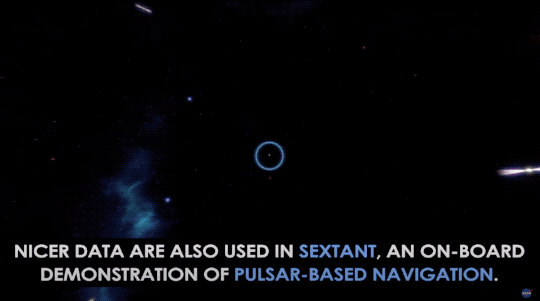
So, imagine you are an astronaut on a lengthy journey to the outer solar system. You could use the technology developed by SEXTANT to help plot your course. Since pulsars are reliable and consistent in their spins, you wouldn’t need Wi-Fi or cell service to figure out where you were in relation to your destination. The pulsar-based navigation data could even help you figure out your ETA!
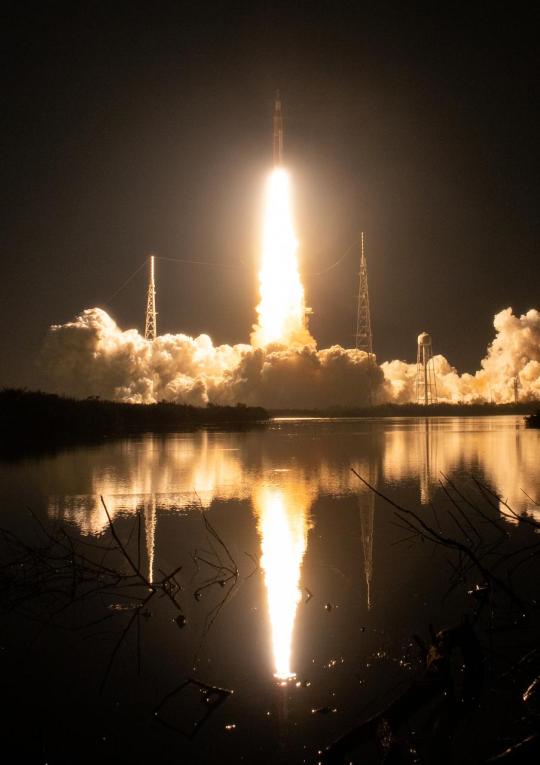
None of these missions or experiments would be possible without Jocelyn Bell Burnell’s keen eye for an odd spot in her radio data decades ago, which set the stage for the idea to use spinning neutron stars as a celestial GPS. Her contribution to the field of astrophysics laid the groundwork for research benefitting the people of the future, who yearn to sail amongst the stars.
Keep up with the latest NICER news by following NASA Universe on X and Facebook and check out the mission’s website. For more on space navigation, follow @NASASCaN on X or visit NASA’s Space Communications and Navigation website.
Make sure to follow us on Tumblr for your regular dose of space!
#NASA#pulsar#Jocelyn Bell Burnell#spaceblr#space#star#neutron star#deep space#telescope#navigation#universe#astronomy#science
4K notes
·
View notes
Text
Analysis of data gathered using cutting-edge methodology – including detailed satellite images and measurements from more than 1,400 ground monitoring stations – reveals a dire picture of dirty air, with 98% of people living in areas with highly damaging fine particulate pollution that exceed World Health Organization guidelines. Almost two-thirds live in areas where air quality is more than double the WHO’s guidelines.
[...]
“This is a severe public health crisis,” said Roel Vermeulen, a professor of environmental epidemiology at Utrecht University who led the team of researchers across the continent that compiled the data. “What we see quite clearly is that nearly everyone in Europe is breathing unhealthy air.”
1K notes
·
View notes
Text
Connecting the World: Telecommunications Satellites Enhance Global Communication Networks

In an increasingly interconnected world, the role of telecommunications has never been more critical. The rapid growth of digital communication technologies has significantly transformed the way we live, work, and interact with one another. At the heart of this transformation lies a technology that orbits high above us – telecommunications satellites. These sophisticated machines play a pivotal role in bridging gaps across continents, bringing people closer, and enabling the seamless exchange of information on a global scale.
Telecommunications satellites are the backbone of modern communication networks. These satellites are designed to transmit signals across vast distances, overcoming the limitations of terrestrial infrastructure. By relaying signals from one point on the Earth's surface to another, they enable instant communication, regardless of geographical barriers. This capability has revolutionized various sectors, from media broadcasting to internet services, emergency communications, and more.
The Evolution of Telecommunications Satellites
The journey of telecommunications satellites began in the mid-20th century. Early experiments with satellite communication laid the groundwork for what would become a global network. The launch of the first artificial satellite, Sputnik, in 1957 marked the dawn of the space age. However, it wasn't until the launch of the first geostationary satellite in 1965 that the true potential of satellite communication was realized. This satellite, positioned in a fixed location relative to the Earth's surface, could provide continuous coverage to a specific region, paving the way for real-time communication across the globe.
Since then, telecommunications satellites have evolved dramatically. Advances in technology have led to the development of more sophisticated satellites with greater capacity, reliability, and efficiency. Modern satellites are equipped with high-powered transponders, enabling them to handle large volumes of data transmission. These advancements have expanded the capabilities of satellite communication, making it an indispensable part of the global communication network.
How Telecommunications Satellites Work
The operation of telecommunications satellites is based on the principles of radio frequency transmission. These satellites receive signals from ground-based stations, amplify them, and retransmit them back to other ground stations. The process involves several key components:
Uplink: The transmission of signals from a ground station to the satellite. This is typically done using high-frequency radio waves.
Transponder: The component within the satellite that receives the uplink signal, amplifies it, and changes its frequency for retransmission.
Downlink: The transmission of signals from the satellite back to a ground station. This completes the communication loop, allowing the original signal to reach its intended destination.
Satellites are positioned in different orbits depending on their specific functions. Geostationary satellites, which orbit at approximately 35,786 kilometers above the equator, provide continuous coverage to specific regions. Low Earth orbit (LEO) satellites, positioned much closer to the Earth's surface, offer lower latency and are often used for services requiring real-time data transmission, such as internet connectivity.
Impact on Global Communication Networks
The impact of telecommunications satellites on global communication networks is profound. They have enabled a level of connectivity that was previously unimaginable, facilitating the seamless exchange of information across vast distances. Here are some key areas where their impact is most evident:
Media and Broadcasting
Telecommunications satellites have revolutionized the media and broadcasting industry. They enable the transmission of television and radio signals to remote and underserved areas, ensuring that people worldwide have access to information and entertainment. Live broadcasts of major events, such as sports competitions and political speeches, are made possible through satellite technology, allowing audiences to experience these moments in real time.
Internet Connectivity
In many parts of the world, terrestrial internet infrastructure is either insufficient or nonexistent. Telecommunications satellites provide a vital solution to this problem by offering internet connectivity to remote and rural areas. Satellite internet services have become increasingly popular, providing reliable and high-speed internet access to communities that were previously disconnected.
Emergency Communications
During natural disasters and emergencies, terrestrial communication networks are often disrupted. Telecommunications satellites play a crucial role in providing emergency communication services, ensuring that rescue and relief operations can be coordinated effectively. Satellite phones and portable satellite communication devices are essential tools for first responders and humanitarian organizations, enabling them to maintain communication in even the most challenging conditions.
Global Navigation Systems
Telecommunications satellites are also integral to global navigation systems. They provide the precise timing and positioning data required for navigation and location-based services. These systems are essential for various applications, including aviation, maritime, and land transportation, as well as for personal navigation devices used by millions of people worldwide.
Future Trends and Developments
The field of telecommunications satellites is continually evolving, driven by advancements in technology and increasing demand for connectivity. Several trends and developments are shaping the future of this industry:
High Throughput Satellites (HTS)
High throughput satellites represent a significant advancement in satellite technology. These satellites offer substantially increased data transmission capacity, enabling faster and more reliable communication services. HTS technology is particularly beneficial for providing broadband internet access to remote and underserved areas, helping to bridge the digital divide.
Constellations of LEO Satellites
One of the most exciting developments in satellite communication is the deployment of constellations of low Earth orbit satellites. These constellations consist of hundreds or even thousands of small satellites working together to provide global coverage. LEO constellations offer lower latency and higher data transfer rates compared to traditional geostationary satellites, making them ideal for applications such as internet of things (IoT) connectivity and real-time data services.
Advances in Satellite Manufacturing
Advances in satellite manufacturing are making it possible to produce smaller, more cost-effective satellites. These miniaturized satellites, often referred to as smallsats or cubesats, can be launched in large numbers, providing flexible and scalable communication solutions. The reduced cost of manufacturing and launching these satellites is driving innovation and enabling new players to enter the market.
Integration with Terrestrial Networks
The integration of satellite communication with terrestrial networks is another key trend. Hybrid networks that combine satellite and terrestrial technologies can offer seamless connectivity, ensuring that users have access to reliable communication services regardless of their location. This integration is particularly important for providing consistent internet coverage in areas with challenging terrain or sparse infrastructure.
Challenges and Considerations
While telecommunications satellites offer numerous benefits, there are also challenges and considerations to address. One of the primary challenges is the cost associated with launching and maintaining satellites. The development, launch, and operation of satellites require significant investment, which can be a barrier for some organizations.
Additionally, the increasing number of satellites in orbit raises concerns about space debris and collision risks. Ensuring the long-term sustainability of space activities requires careful management of satellite operations and the implementation of measures to mitigate the risk of space debris.
Conclusion
Telecommunications satellites have fundamentally transformed global communication networks, enabling instant connectivity and information exchange across vast distances. From media broadcasting and internet connectivity to emergency communications and global navigation, the impact of these satellites is far-reaching and profound.
As technology continues to advance, the future of telecommunications satellites looks promising. High throughput satellites, LEO constellations, and advancements in satellite manufacturing are set to further enhance the capabilities of satellite communication. By overcoming challenges and embracing innovation, telecommunications satellites will continue to play a crucial role in connecting the world, bridging gaps, and enabling a more connected and informed global community.
In a world where connectivity is essential, telecommunications satellites stand as a testament to human ingenuity and the relentless pursuit of progress. They embody the spirit of exploration and innovation, bringing people closer together and fostering a sense of global unity. As we look to the future, the continued evolution of telecommunications satellites promises to unlock new possibilities and drive the next wave of communication advancements.
196 notes
·
View notes
Text
There's an old saying, probably from back in the 90s, if not earlier, before the big post-War orbital reinvestment, that laws stop at the Karman Line. Not quite true, but close enough. Technically in orbit you're in international waters, and as such companies can incorporate their stations under the laws of the Lunar Soviet, the Martian Exploratory Committee, or even the Titan Expedition if they want to get around safety regulations. Safety regulation like the one that says people need to experience real, full gravity, not just rotational or accelerational simulation, two years for every year in orbit. I hadn't been ground side in a decade.
We were somewhere over I think the American Reclamation Zone, as I left the sled, tethers the only thing holding me to anything as I floated on nothing. A single hand reaching up towards the solar shade of the military satellite the company had been contracted to repair. Somewhere down there I had been born.
"Ames?" came Control's reassuring voice, ringing through my company issued implants.
"On structure."
"Right," came Control's voice, "don't be enjoying the view. The corporate-military conglom that owns this beast wants the job done right, and unfortunately that means I'm gonna need you to hard-wire into the satellite. Don't have your head down in the clouds."
"My head's always in the dark, Control," I said, working my way hand over hand along the guide-bars towards the access panel. "Why is it unfortunate?"
"Are you there?"
"Yeah," I said, pulling the long connection wire from the company's suit towards the panel, watching the sync happen in my cornea. "Why?"
"You'll see."
"Well now," said a new voice, suddenly speak in my head with all the cloying subtlety of a nineteen year old drunk outside a bar, "aren't you just dreammmy."
514 notes
·
View notes
Text
Space Station Concepts: Space Operations Center
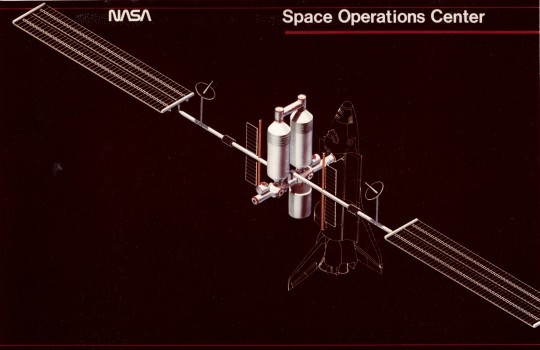

"The SOC is a self-contained orbital facility built up of several Shuttle-launched modules. With resupply, on-orbit refurbish- ment and orbit maintenance, it is capable of continuous operation for an indefinite period. In the nominal operational mode, the SOC is manned continuously, but unmanned operation is possible.

The present mission management and control process is characterized by a people-intensive ground monitoring and control operation involving large supporting ground information and control facilities and a highly- integrated ground-flight crew operation. In order to reduce dependence on Earth monitoring and control, the SOC would have to provide for increased systems monitoring; fault isolation and failure analysis, and the ability to store and call up extensive sets of data to support the onboard control of the vehicle; and the onboard capability for daily mission and other activity planning."
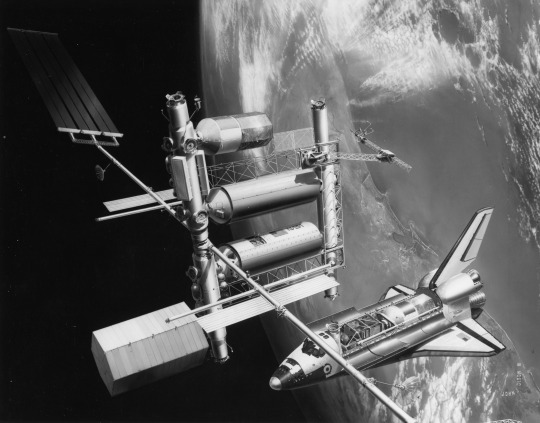

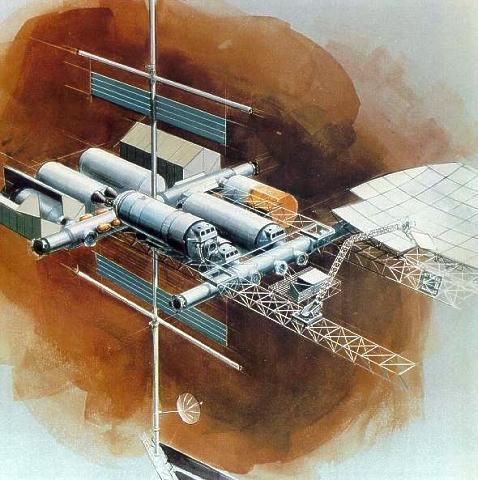
"Like most other space station studies from the mid/late 1970s its primary mission was the assembly and servicing of large spacecraft in Earth orbit -- not science. NASA/JSC signed a contract with Boeing in 1980 to further develop the design. Like most NASA space station plans, SOC would be assembled in orbit from modules launched on the Space Shuttle. The crew's tour of duty would have been 90 days. NASA originally estimated the total cost to be $2.7 billion, but the estimated cost had increased to $4.7 billion by 1981. SOC would have been operational by 1990.
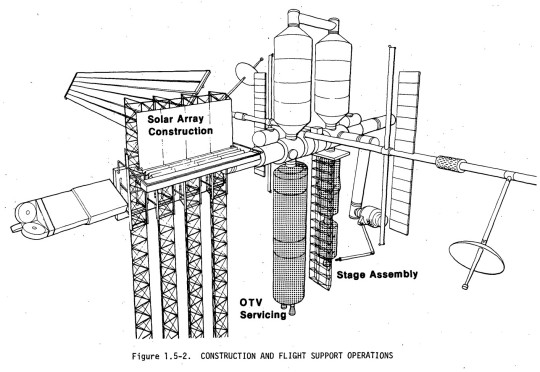
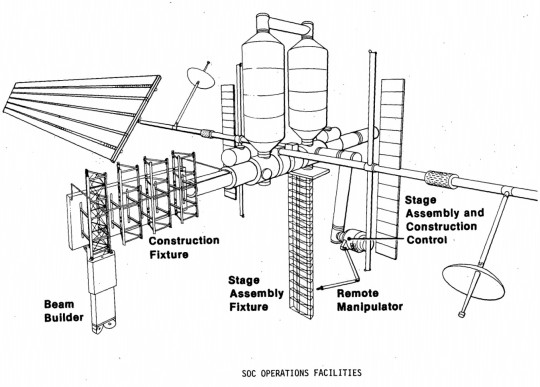

NASA's Johnson Spaceflight Center extended the Boeing contract in February 1982 to study a cheaper, modular, evolutionary approach to assembling the Space Operations Center. An initial power module would consist of solar arrays and radiators. The next launches would have delivered a space tug 'garage', two pressurized crew modules and a logistics module. The completed Space Operations Center also would have contained a satellite servicing and assembly facility and several laboratory modules. Even with this revised approach, however, the cost of the SOC program had grown to $9 billion. Another problem was Space Operations Center's primary mission: spacecraft assembly and servicing. The likely users (commercial satellite operators and telecommunications companies) were not really interested in the kind of large geostationary space platforms proposed by NASA. By 1983, the only enthusiastic users for NASA's space station plans were scientists working in the fields of microgravity research and life sciences. Their needs would dictate future space station design although NASA's 1984 station plans did incorporate a SOC-type spacecraft servicing facility as well."
Article by Marcus Lindroos, from astronautix.com: link

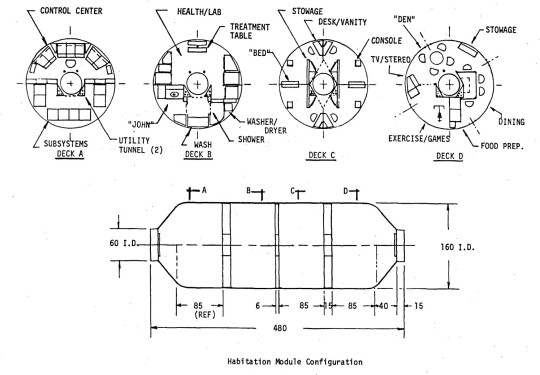


NASA ID: link, S79-10137
Boeing photo no. R-1859, link, link
#Space Operations Center#Space Station Freedom#Space Station Concept#Space Station#Concept Art#Space Station Program#Space#Earth#Space Shuttle#Orbiter#NASA#Space Shuttle Program#1979#1980s#my post
455 notes
·
View notes
Text
South Korea Satellite Ground Station Equipment Market: Growth Prospects & Forecast (2024-2032)

South Korea’s satellite ground station equipment market is on an exciting trajectory, with impressive growth prospects from 2024 to 2032. As South Korea continues to enhance its position in the global space industry, the demand for advanced ground station equipment is set to rise significantly, driven by technological advancements, expanding satellite networks, and increasing space exploration activities.
Growth Prospects
South Korea has emerged as a key player in the global space sector, investing heavily in space exploration and satellite technology. The country’s commitment to becoming a leader in space innovation is a primary driver of the growth in its satellite ground station equipment market. As South Korea accelerates its space ambitions, the need for sophisticated ground station infrastructure to support satellite operations becomes increasingly critical.
Several factors contribute to the promising growth prospects for South Korea’s market:
Expansion of Satellite Networks: South Korea’s involvement in deploying new satellite constellations and expanding existing networks creates a strong demand for advanced ground station equipment. The government’s space programs and collaborations with international space agencies are leading to the launch of more satellites, driving the need for enhanced ground infrastructure.
Technological Advancements: Innovations in satellite ground station technologies, including high-throughput antennas, phased-array systems, and software-defined radios, are transforming the market landscape. South Korean companies are investing in developing and integrating these advanced technologies to meet the growing demands of satellite communication and data management.
Government Support and Investment: The South Korean government is actively supporting space initiatives through funding and strategic investments. These investments are aimed at boosting the country’s capabilities in satellite technology and ground station infrastructure. Government-backed projects, such as satellite launches and space research, further stimulate the demand for cutting-edge ground station equipment.
Forecast
The forecast for South Korea’s satellite ground station equipment market is highly optimistic, with significant growth expected over the next decade. Key drivers of this growth include:
Increased Satellite Deployments: As South Korea continues to launch and operate a growing number of satellites for communication, earth observation, and scientific research, the demand for ground station equipment will rise. The need for reliable and efficient ground infrastructure to manage satellite operations will drive market expansion.
Advancements in Ground Station Technologies: The development and deployment of next-generation ground station technologies will play a crucial role in market growth. Innovations such as automated tracking systems, advanced signal processing, and integration with artificial intelligence will enhance the capabilities of ground stations, supporting the complex needs of modern satellite networks.
Strategic Partnerships and Collaborations: South Korea’s collaboration with international space agencies and private companies will contribute to market growth. Joint ventures and partnerships focused on satellite technology and ground infrastructure will create opportunities for innovation and expansion.
Request Free Sample Report - Receive a free sample report to preview the valuable insights and data we offer.
Challenges
Despite the positive outlook, the market faces challenges such as high costs associated with advanced ground station equipment and the need for continuous investment in infrastructure. Additionally, navigating regulatory requirements and ensuring compliance with international standards can be complex.
In conclusion, South Korea’s satellite ground station equipment market is poised for robust growth, driven by the expansion of satellite networks, technological advancements, and government support. By addressing challenges related to cost and regulation, stakeholders can capitalize on emerging opportunities and contribute to the continued advancement of South Korea’s space capabilities.
About US
At Market Research Future (MRFR), we enable our customers to unravel the complexity of various industries through our Cooked Research Report (CRR), Half-Cooked Research Reports (HCRR), Raw Research Reports (3R), Continuous-Feed Research (CFR), and Market Research & Consulting Services. MRFR team have supreme objective to provide the optimum quality market research and intelligence services to our clients. Our market research studies by products, services, technologies, applications, end users, and market players for global, regional, and country level market segments, enable our clients to see more, know more, and do more, which help to answer all their most important questions. To stay updated with technology and work process of the industry, MRFR often plans & conducts meet with the industry experts and industrial visits for its research analyst members.
Contact us:
Market Research Future (part of Wants tats Research and Media Private Limited),
99 Hudson Street,5Th Floor, New York, New York 10013, United States of America
Sales: +1 628 258 0071 (US) +44 2035 002 764 (UK)
Email: [email protected]
0 notes
Text

Space Shuttle Discovery launches off the pad during STS-85. August 7, 1997.
The prime payload of STS-85 was the Cyrogenic Infrared Spectrometers and Telescopes for the Atmosphere Shuttle Pallet Satellite 2 (CRISTA-SPAS-2), which had flown previously on STS-66 in 1994. CRISTA-SPAS-2 was deployed from Discovery's payload bay and measured trace gasses and the dynamics of Earth's middle atmosphere with its three telescopes and four spectrometers. The satellite was recovered by Discovery following a 9 day free-flight.

CHRISTA-SPAS-2 during its 9th and final day of free-flight, prior to capture by Discovery's Remote Manipulator Arm.
Additional payloads included the Manipulator Flight Demonstration sponsored by NASDA, the Japanese Space Agency (later known as JAXA). The demonstration tested a newly designed robotic arm that would later be installed on the Japanese Kibo module of the International Space Station.

The sun sets on day 8 of STS-85.

STS-85 crew on orbit. Top row, from left: Payload Specialist Bjarni Tryggvason (CSA), Mission Specialist Stephen Robinson, Mission Commander Curtis Brown.
Bottom row, from left: Mission Specialist Robert Curbeam, Jr., Payload Commander N. Jan Davis, Pilot Kent Rominger.
Landing was originally schedule for August 18, but ground fog at the Kennedy Space Center pushed the landing date to August 19.

Discovery returns to Earth, successfully completing the 12-day STS-85 mission.
NASA 1, 2, 3, 4, 5
121 notes
·
View notes
Text

By Primus’s Will
An original Optimus Prime x AFAB!Reader Fanfic by Blu <3
Author Note: The pronouns used will be they/them to keep it mostly gender neutral, but y/n is AFAB. This is also my first fanfic in a really long time, I apologize if it’s not the best. This is also going to be entirely my own AU, there will be returning characters from other media but the storyline is my own ^^
Tags: Fluff, Angst, Swearing, EXTREME SLOW BURN
A bead of sweat dripped down your forehead, stinging your eyes as you swiped it away. The dirt stained jumpsuit you were sporting smeared a new line of dark brown/orange across your face. "Jesus Christ.."
"Y/N! Is your beam secured properly? Make sure the bolts are all fastened correctly! Get focused!"
'Yeah yeah whatever. I know how to do my job.' You thought to yourself, rolling your eyes before throwing a thumbs up in the air to your boss. "Yes Sir! Everything is fastened I'm back on my way down as we speak!"
Maneuvering down the side of the half built building, you made sure to watch your feet, wary of the placement of loose nails, sharp edged beams, and other construction workers as well. You knew it was almost time to head home, the sun dipping low behind the cities skyline.
"Y/N, You've been spacing out like crazy today. Are you good? Do you need a day off?"
'Yes.'
"No, I know I've been working everyday but I really just need the money right now. Especially with rent coming up."
Your boss looked at you and crossed his arms. "Listen, Y/N. I get it, but payday is tomorrow. Just take tomorrow and the weekend off. I don't wanna see you in whenever I get here in the morning. You're gonna kill yourself with working everyday. An entire month of working nonstop is going to make you sick."
Before you could protest he handed you a slip, the words "DAILY CLOCK CARD." written in bold letters. "Sir, I'm okay I promise. I'll be fine to keep-" He cut you off and pointed at the pop up warehouse. "Go. You need to rest, im not paying for any workers comp if you pass out and get hurt on site."
'You...You don't pay for that? The company does?'
You drug your feet all the way to the clock out station, making every last second of your time count before submitting your time card. You walked to your locker and pulled out your bag, grabbing your car keys and walking to the parking lot of the building you were helping build. You unlocked the car and began your journey home, the sun finally setting as you began the long drive out of the city and into the desert, where your home was located and far from the shining bright lights of the city.
~~~~~~~~~~~~~~~~~~~~~~~~~~~~~~~~~~~~~~~~~~~~~
Pulling into your driveway, you turned off the car and headed up the stairs to your house, unlocking the door and pulling your grimy work boots off to leave outside by the front door.
Once inside you flipped some of the lights on and walked to your bathroom, stripping naked to shower and get all the dirt and nastiness off of you from work. The steam from the shower quickly filled the room and you brushed your teeth before hopping in the shower and relaxing as the warmth of the water poured down your back.
You closed your eyes, letting yourself relax before a loud boom rang through your ears. “What the hell?!” You quickly turned off the water and wrapped a towel around yourself, looking outside to try and see what the noise was.
The darkness made it hard to see, even though the moon had fully risen by this point. In the shadows though you saw what looked like a giant crater in the ground, some brush around the area glowing like it had almost caught on fire. You squinted and gasped when you began to hear helicopters in the distance, shutting the curtain and all the lights off in the house so they would leave you alone.
‘What in the hell is going on? Did a piece of a satellite just fall in my yard?’
You threw on a loose night shirt and climbed into bed, pulling your covers up over you and relaxing into the mattress, your eyes beginning to feel heavy almost immediately.
‘If a satellite fell then the government better be willing to pay me for the damage to my property..’
You closed your eyes and fell asleep, only slightly annoyed by the sound of helicopter blades above your house.
~~~~~~~~~~~~~~~~~~~~~~~~~~~~~~~~~~~~~~~~~~~~~
#optimus prime#optimus prime x reader#transformers#transformers optimus#transformers x human#transformers x reader#transformers x reader angst#optimus x reader#optimus prime angst#transformers au#fanfic#transformers fanfiction#transformers x Reader fanfiction#I’m so sorry I’ve been gone for so long#i’m back
91 notes
·
View notes